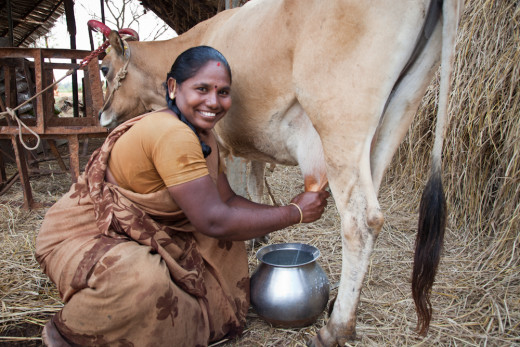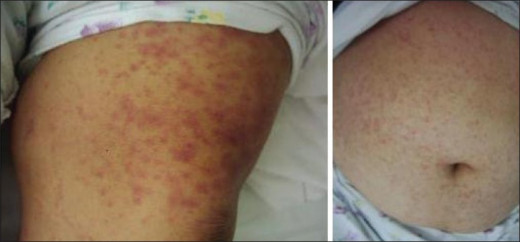Brucellosis (Undulant Fever, Malta Fever, Abortus Fever): Clinical Presentations, Diagnosis And Treatment
Etiology Of Brucellosis

Clinical Manifestations Of Brucellosis
Brucellosis is an infectious disease of animals which is transmitted to man handling infective material or by ingestion of infected articles of food. Brucellosis is present all over the world, but it has been reported most frequently from USSR, Middle East, India, Europe, USA, Mexico and a large part of South America. Goats, dairy cattle, swine, sheep, dogs and other animals harbor the organisms. The placenta, fetus, milk and semen of these animals are infective to man. In most of the cases, the infection is acquired by contact with sick animals. Chronic brucella infection may occur as an occupational disease. Brucella abortus causes abortion in cattle but not in humans. Brucella melitensis infection spreads through infected goat’s milk, B.abortus is obtained from cattle and B.suis from pigs.
Pathogenesis: The organisms enter through the gastrointestinal tract or through abrasions in the skin and mucus membranes. They pass through the local lymph nodes into the blood stream to localize in the reticuloendothelial system of the bone marrow, spleen, lymph nodes and the liver. The phagocytosed bacilli survives in the phagocytic vacuoles of leucocytes. They multiply in the reticuloendothelial tissues to produce granulomas made up of epithelioid cells, giant cells, lymphocytes, and plama cells. Less frequently, granulomas are seen in the bones, endocardium and the testes. At autopsy, the brain, myocardium, testicles and the gall bladder show perivascular infiltration by lymphocytes.
Clinical features: The incubation period is 2 to 3 weeks ( a few days to several months). The onset of the disease is gradual with vague general symptoms like fever, malaise, weakness, sweating, chills, arthralgias and backache. A few patients have abrupt onset with true undulant fever which shows wide fluctuations in temperature, extending for long periods. Spleen and lymph nodes are enlarged in some cases. Spinal tenderness, orchitis and arthritis are common. The joints are not permanently damaged. Endocarditis may occur rarely, but when it occurs it is serious. Other complications include meningocephalitis, nephritis hepatic and splenic suppuration, calcification in the liver and spleen, cholecystitis and uveitis. In some cases, pancytopenia may develop. If left untreated, the disease continues for days to several weeks and the patient recovers after a few relapses.
Clinical Manifestations Of Brucellosis

Infectious Diseases
Chronic Brucellosis
This infection presents with arthralgias and intermittent low grade fever. Serological tests and skin test may be positive.
Diagnosis: Clinically, the disease should be suspected when a patient presents with a typhoid like illness, lasting for more than a few weeks, especially if associated with spondylitis or arthritis. Diagnosis is confirmed by isolation of the organism from blood, bone marrow, or other tissues. The organisms are slow growing and hence isolation may take about six weeks. Special laboratory techniques are necessary to grow Brucella. Agglutinating antibodies are detectable. An intradermal skin test similar to tuberculin test uses Brucella antigen for diagnosis.
Treatment: Tetracycline in a dose of 500 mg X 6-hourly given before food along with streptomycin 0.5g every 12 hours is effective. This treatment has to be continued for 3 weeks. Cotrimoxazole in conventional doses is a useful alternative in those who fail to respond.
Prevention: Brucellosis can be eradicated from the community by first eliminating the disease from cattle by vaccination and removal of infected cattle. Pasteurisation of milk kills the organism. A live vaccine 19-B A is available for protecting persons at special risk.
© 2014 Funom Theophilus Makama









